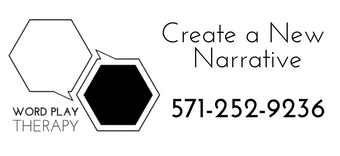Theoretical Orientation to Counseling
Therapists use psychological theories to understand human behavior and to guide their work with clients in therapy. A therapist’s theoretical orientation towards counseling helps the therapist stay on course and deliver a treatment that will work for helping you change. Therapists are drawn to specific theories because of their own hypotheses for how humans are able to achieve behavior change.
My theoretical orientation for counseling can be described as integrative, as I use conceptual frameworks from several different perspectives when they are appropriate for individual clients and for specific phases of treatment. The theoretical perspectives I find most helpful for clients include interpersonal process therapy, attachment theory, cognitive behavioral therapy (CBT), and dialectical behavior therapy (DBT). Additionally, I utilize feedback informed therapy (FIT) to explore the strength of the therapy relationship and determine if my therapeutic choices resonate with each client.
Interpersonal Process Theory
I use the interpersonal process approach to deepen our working relationship. This approach considers our relationships with others as central to how we learn about the world around us. The goal of the interpersonal process approach in therapy is to give clients a chance to experience a different (e.g., more responsive and consistent) kind of relationship than the ones they may have had with caregivers in their past. Clients can have a “corrective emotional experience” (or a re-learning experience) and begin to change their beliefs about their current and future relationships with others. We practice new ways of relating to one another so that clients can feel confident experimenting with new behaviors in their everyday life. One result of the use of the interpersonal process approach is that clients experience a deepening of their relationships with important others such as spouses, children, and friends.
Attachment Theory
The integration of attachment theory into therapy is useful for clients because it is focused on how an individual’s relationships (or attachments) to one’s primary caregivers (often parents or grandparents) has played a central role in the development of long-term relationships. Clients discuss how they learned to regulate their emotions from their parents. They explore the level of responsiveness and care that they experienced in those early relationships. These attachment relationships have both physical and emotional qualities and are based on an individual’s experience of the caregivers as stable and secure source(s) of support.
When individuals experience a secure attachment with an attachment figure, they are often able to explore new environments, take risks, and develop a stable sense of self and other. However, when an individual experiences abuse, neglect, or a poor fit with an attachment figure, different types of insecure attachments may form. These insecure attachments inhibit the development of interpersonal skills and can contribute to the development of later mental health difficulties (e.g., depression, anxiety).
Cognitive Behavioral Theory
I utilize cognitive behavioral therapy (CBT) approaches to teach clients concrete coping skills for managing their overwhelming emotions and to learn new ways of thinking about their lives. Clients learn the connections between their thoughts, feelings, and behaviors. I also appreciate that CBT incorporates the use of homework between therapy sessions to maximize reflection, growth, and change in behaviors between sessions. I work with clients to decide whether homework assignments, whether formal or informal, will be helpful to them during their treatment.
I bring dialectical behavior therapy (DBT), a type of CBT, into the therapy room whenever possible. DBT is an approach that is helpful for clients who have difficulty regulating strong emotions and have significant difficulties in their relationships with others. It also incorporates strategies for learning mindfulness skills. Working on mindfulness skills increases clients’ ability to relax, brings inner peace and a sense of calm, and allows clients’ feel more in control when faced with over overwhelming emotions or difficult life events. The central dialectic of therapy that is discussed in DBT, one of both wanting to accept oneself completely while also wanting to change and grow, resonates deeply with clients.
Feedback Informed Therapy
The use of feedback informed therapy is another aspect of the work I do with clients. Feedback informed therapy (FIT) was derived from research on psychotherapy outcomes. Psychotherapy is most effective when clients believe the relationship between the therapist is strong, when the client feels understood, and when the therapist and client are working on the same goals.
FIT is an emerging therapeutic stance that involves consistent checking-in with clients about how they are doing outside of session in the areas of their feelings of well-being, relationships with others, and functioning in the world. Additionally, the therapist regularly conducts a brief assessment with the client to learn more about whether the client feels heard and respected, if they are working on the client’s goals, if the therapist’s approach is a good fit for the client, and how the sessions are feeling in general.
Exploring this feedback on how therapy is progressing on a regular basis allows me to tailor my sessions to each individual and the concerns they bring to counseling. The feedback I receive from clients is critical to determining when therapy is helpful and whether it should continue or the client is ready to complete the work. FIT also helps determine which types of interventions or activities are most beneficial to helping clients reach their therapy goals.
These different theoretical perspectives on human development and how therapy can be effective, are enriched by one another. They deepen our understanding of our individual psyches as well as connect us to the rest of humanity. We will discuss these approaches to therapy as they relate to what brings you into counseling and as they will help you reach your therapy goals.

